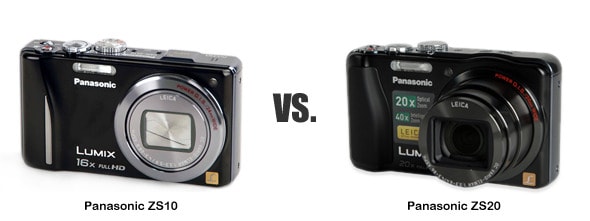Head to Head: Panasonic ZS20 Vs. Panasonic ZS10
The Panasonic DMC-ZS20 features a new sensor and hardware upgrades over last year's disappointing ZS10. After reviewing both, we take an in-depth look at the two cameras and see if the updates to the ZS20 are worth the $350 price tag.
Recommendations are independently chosen by Reviewed's editors. Purchases made through the links below may earn us and our publishing partners a commission.

The Panasonic DMC-ZS20 follows up on the relative disappointment of 2011's DMC-ZS10, upping the ante with a longer optical zoom range, new 14.1-megapixel image sensor, and 1080/60p video recording capability.
The DMC-ZS10 (also known as the TZ20 outside of North America) promised a lot, with its combination of long zoom (16x optical) lens and 14.1-megapixel image sensor, there were hopes that it would be a worthy head to Panasonic's vaunted travel zoom lineup. The ZS10 instead fell flat, with image quality that left a great deal to be desired and extra features such as a built-in GPS that rarely worked.
The ZS20 (TZ30 outside North America) doesn't improve in all those areas (the GPS is still not very sensitive and didn't work in or around our lab in Boston at all.), but it does improve on the image quality in a few key areas. The ZS20 also provides token upgrades across its spec sheet, with a 20x optical zoom lens, full 1080/60p video recording, and a slightly improved ISO range.
In the performance tests, we weren't totally unimpressed with the ZS10, largely for its ability to reduce noise throughout its images and maintain sterling color accuracy. Unfortunately, the end results of those processes were accurate colors, but little fine image detail left, especially at higher ISOs. This left many of the ZS10's shots looking splotchy, the result of a JPEG engine that was simply too invasive.
The ZS20 tones down the noise reduction throughout the ISO range, preserving fine detail and dynamic range far better. The ZS20 also expands the camera's zoom range while also increasing overall sharpness. The low ISO shots from the ZS20 are simply much cleaner, sharper, and more vibrant than those on the ZS10.
Both cameras are not the best at high ISO shots (few point-and-shoots are), but the ZS10 was far more aggressive in reducing noise. The ZS10 may have slightly better test scores across its entire performance range, but the best shots out of the ZS20 beat the best shots out of the ZS10, you just have to play to the camera's strengths.
If you're after the most accurate colors possible, then the ZS10 is fine (if expensive), but we feel that the overall (if ever subjective) image quality on the ZS20 is a better option, with the additional features an added bonus. Either way, we'd recommend checking out our best extended zoom cameras page and seeing if you can't find something to better suit your needs.
For the full review of the Panasonic DMC-ZS20, please go here. To read our full review of 2011's Panasonic DMC-ZS10, please go here.

